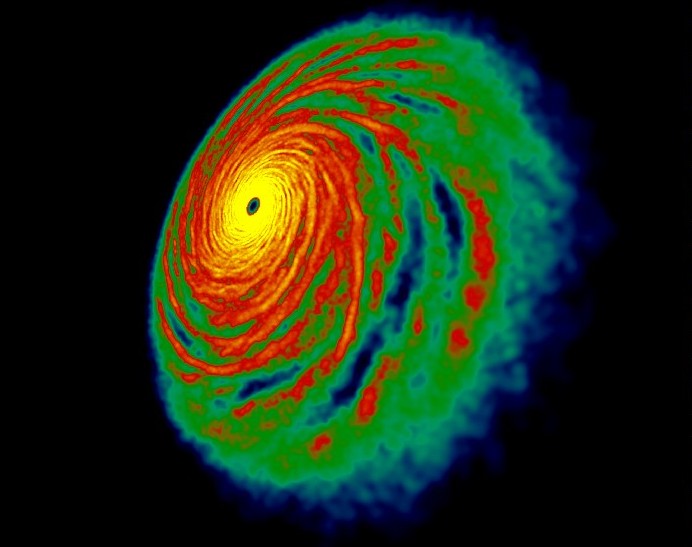Self-gravitating protostellar discs

Young protostellar discs can be subject to gravitational instabilities. In a non-self-gravitating disc, dust grains generally lose angular momentum and tend to migrate inwards due to the influence of gas drag at a rate that depends on the grain size.
The aim of this WP is twofold. On the theory side, we will perform three dimensional SPH simulations of self- gravitating accretion discs, taking into account both gas and dust components. We wish to use the well tested drag implementation of PHANTOM, together with the much higher numerical resolution available today, to assess properly the issue and determine the mass of planetesimals formed by direct dust collapse in spiral arms. Linking theory with observation, we will use also hydrodynamical results as a basis for understanding observational signatures of disc-self gravity (see for example the case of the spiral structure observed in Elias 2-27). By using state of the art Monte Carlo radiative transfer calculations, we will determine, for the first time, observational signatures of disc self-gravity as a function of wavelength.
